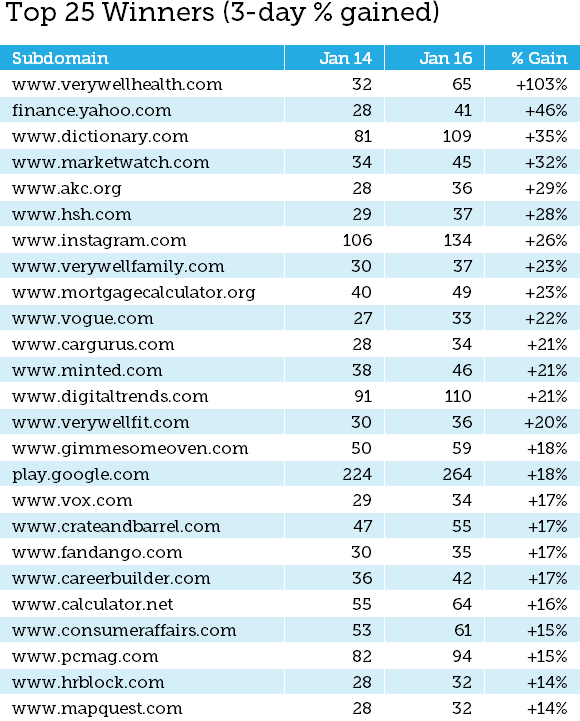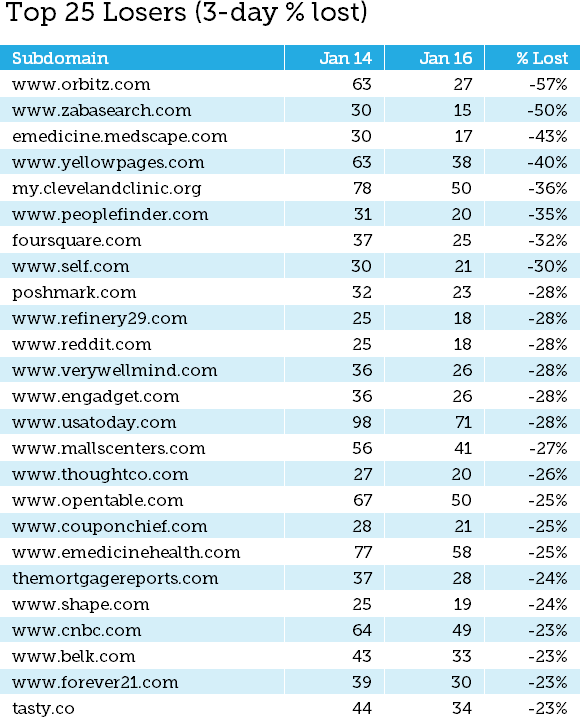SEO Best Practices in 2020: The Complete Guide

New to digital marketing or building organic traffic with SEO? There’s a fair chance that you’re in a state of confusion on what exactly is going on with SEO in 2020.
Our SEO best practices guide will lay out everything that's changed in the last few months... and what you need to do about it.
Different ‘authority sources’ are saying different things. Some will tell you not to panic and others will tell you that you need to adapt to the recent changes.
It’s come to a point where you no longer know who to listen to, and what steps you should still be taking (or no longer taking).
Since the 2020 algorithm updates, a lot of things have changed or rendered obsolete.
Well, that’s what we’re here for.
Today, you’ll find out about the significant events that happened during the latter part of 2019. Then, we'll continue along to the early months of 2020 and find out exactly how it affects you.
We’ll also show you the specific steps you need to take to adapt to these changes to get back into the game.
So without further ado, let’s jump in:
How Recent Algorithm Updates Have Changed the SEO Game

Did you know that Google updates its algorithm at least 2000 times per year?!
In fact, it listed a whopping 3200 updates back in 2018. That’s an average of 8-9 updates per day.
That wasn’t meant to scare you. We’re not supposed to be tracking every update Google implements in its algorithm. We can’t anyway, even if we wanted to. Most of these updates aren't made public.
For the ones that do get published, Google was kind enough to let us know. Updates that have a significant effect on organic rankings usually get a silly name.
That said (and this happens most of the time), we get very general information that is of little help. Identifying exactly how these algorithm changes affect us is difficult. Disinformation can also be a problem, whether from newbie SEOs or Google themselves.
Let’s take a look at the most recent updates that made waves in the known SEO world:
The Google BERT Update

What is BERT?
BERT stands for Bidirectional Encoder Representations from Transformers. This algorithm update rolled out in the latter part of October 2019.
BERT is an upgrade to the current machine learning characteristics of Google’s Algorithm.
Let’s pause there for a moment.
Before we could actually define what BERT does, we’ll need to understand first what it improves upon. The Hummingbird and Rankbrain functions of Google’s algorithm.
Hummingbird is the algorithm’s way of defining keywords based on the context supporting it.
To Hummingbird, the number of times a keyword appears on a page is irrelevant. Hummingbird looks for context within the content.
But, Hummingbird can only do this for keywords and search queries it remembers. It learns but can’t handle new search keywords and keyword combinations.
The problem is, 15% of all search queries processed every day are new . Hummingbird can’t deal with them alone.
That’s where Rankbrain takes the stage.
Rankbrain is a machine-learning system that processes unfamiliar and unique queries. It relates them to existing searches, giving users more relevant search results.
Let’s say Google’s algorithm doesn't recognize the search query that you used today. It gave you irrelevant results. You’ll try different search queries that finally take you to the answer you’re looking for, right?
Rankbrain will remember the next search queries you used after your failed attempts. It will also remember the results you clicked! It will then file away those pages as relevant to your original search query.
Neat, huh? The machine learning ranking process, in a nutshell.
Hummingbird and Rankbrain have one major limitation, though! They make a great team together but can’t deal with the nuances in language on their own.
BERT does.
BERT understands how relationships between words change the meaning of a search query as well as its intent.
It analyzes micro variations in queries that were previously ignored by its predecessors and no longer treats text like “buckets of words”.
It also identifies small variations in a statement that affects the whole intent of the search query.
Here’s one of the samples that Google provided:
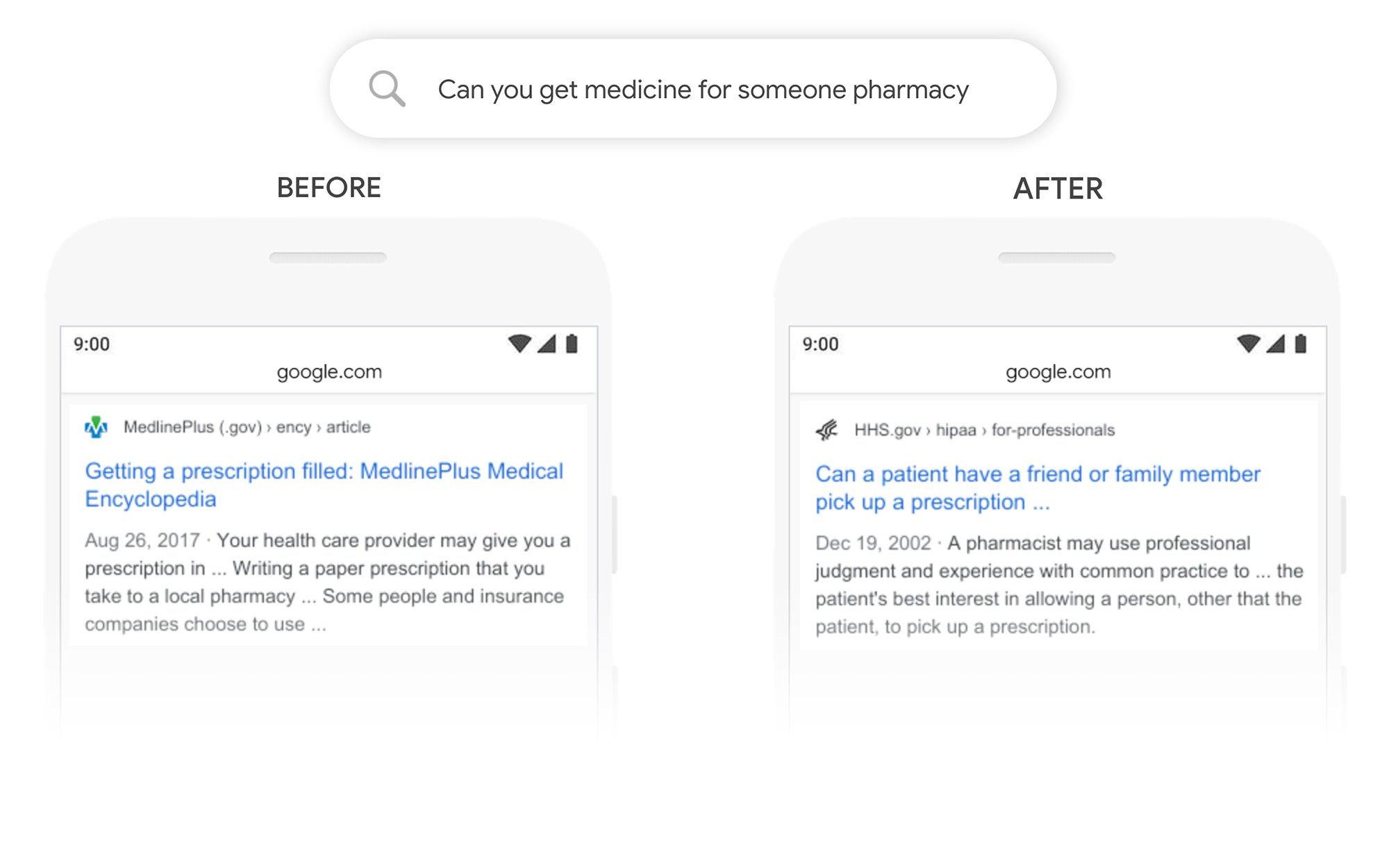 Image Source: Google https://storage.googleapis.com/gweb-uniblog-publish-prod/images/Query-CanYouGetMedicineForSomeonePharmacy.max-2000x2000.jpg
Image Source: Google https://storage.googleapis.com/gweb-uniblog-publish-prod/images/Query-CanYouGetMedicineForSomeonePharmacy.max-2000x2000.jpg
Awesome, right? But the real question is:
How Does BERT Affect You?
Ever been outranked by a website that has higher authority than you in terms of backlinks despite your website’s pages having more topical and in-depth content?
BERT evens the playing field for us.
This is great news for small-time SEOs who don’t have 6 figure budgets like big media sites.
For BERT, the number of external pages linking to a website is secondary to the goal of having users get what they’re looking for on their first click.
This means that if you are continuously churning out high-quality, comprehensive content, then BERT will prioritize you over high-authority sites that do not fully deliver exactly what the user is searching for.
A word of warning though:
like Ernie’s friend, BERT is not all rainbows and unicorns.
Since the algorithm is now sophisticated enough to identify nuances in language and how it changes a keyword’s meaning and search intent, you can be sure that your content will be under very close scrutiny.
While BERT promotes fair play, it does so under extremely strict rules. This means you should narrow down your focus to specific search intents, and create content that answers user queries on point.

Google’s Broad Core Update
What Broad Core Did
Released this January 2020 as a core update, the exact changes that were implemented (in typical Google fashion) were not released to the public by their liaison.
This is where the differing opinions and theories of SEO experts closely watching these updates come from.
In short: No one is 100% sure what is really going on.
What’s concrete to us are the results that came after and how it affected a lot of web page rankings.
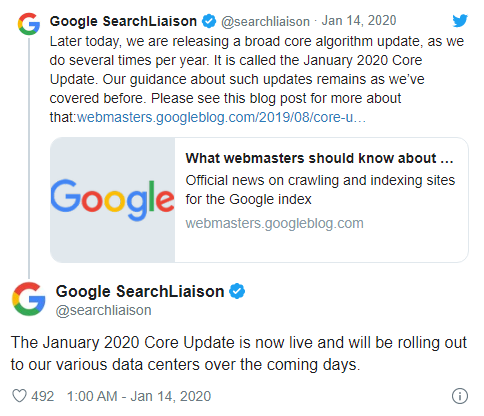
Let’s take a look at the MOZ compilation that shows some of the Winners and Losers after the update was rolled out:
Several other sites that are considered as authority figures in the SEO field had similar findings based on these results.
And while Google has not officially confirmed the validity of these findings, we can definitely come to a conclusion.
The recent core update sees Google implementing increased standards for YMYL sites, as well as enforcing their E-A-T qualification criteria for ranking all web pages.
How Does the Broad Core Update Affect You?
To gain a comprehensive idea on the extent of the Core Update’s effects to your website, we need to understand what YMYL Sites are as well as the E-A-T criteria:
YMYL: Your Money or Your Life
These are entities that exist online, whether they be businesses or not-for-profit informational sites. The products, services, or the information that they are offering have direct irreversible effects to the health, lifestyle, or livelihood of their customers. Google is putting more focus on these kinds of sites to make sure they’re giving accurate content to searchers. If your line of business belongs in the industries of medicine, health, finance, investments, or news publications, then you are considered a YMYL site and Google is closely monitoring you.
E-A-T: Expertise, Authoritativeness, and Trust Signals
Let’s define each of the different aspects of this criteria:
● Can you be considered as an expert in your field?
●Are your website’s claims backed by your expertise?
●Do you have enough experience in your industry to provide insights and recommendations to your customers?
●Is your expertise backed by proof and years of study?
●Are your recommendations agreed upon by other experts in the field?
●Do your or your business have certifications and awards that proves your brand’s authority in the industry?
● Testimonials
●Reviews from Google My Business, Google Play Store, Facebook, and other Social Media platforms
●Mentions about your brand or your site in forums like Reddit, or question and answer hubs like Quora
●Comments and Tags about your business in Social Media
Meeting these criterias, especially if your business is considered a YMYL site, is important for your pages to rank well in SERPs.
In summary: Google no longer wants to deliver inaccurate, unconfirmed, unproven, and false information to its users that would critically affect their health, lifestyle, or livelihood in any way.
The Fall of Position Zero

What is Position Zero?
What we dub as “Position Zero” is actually a Google function called Featured Snippets. It has been around since 2014 so it’s not really anything new or innovative.
It is however, one of the most sought-after pieces of digital real estate in Google’s SERP. We all know that the top spots of SERP are dominated by high-authority sites and Google Ads….if you’re unlucky enough to have advertisers gunning for the same keywords you are focusing on.
Featured snippets gave organic digital marketers a way to bypass all that and become the first result customers would ever see, even before they see the Top 1 result. Hence, the term name “Position Zero”.
What’s Changed?
Google decided to ‘declutter’ the results and remove organic listings that were used as part of the featured snippets position. You used to be able to grab a position zero ranking as well as get placed somewhere (usually near the top) in the organic rankings. This means that Position Zero is now in actuality, Position One.
This update spurred a lot of differing reactions from digital marketers online, especially after the difference in Click Through Rates became evident. Most of the initial reaction was how to get out and cut their losses by opting out of being included in Featured Snippets.
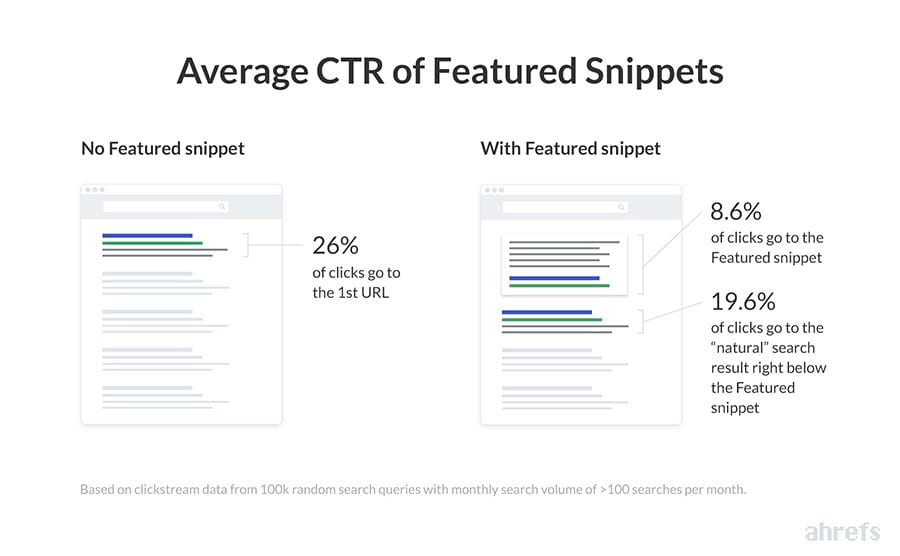
How Does This Negative Change Affect You?
If you haven’t been aiming for position zero before, then it doesn’t.
If you have though, then there are several things you need to consider:

Understanding Google’s Goal
There’s one thing we digital marketers need to accept: Our target audience are Google’s customers before they become ours.
If you take a step back and look at the layout of Google’s SERP, you’ll see that they have been trying to provide answers to users’ queries without the need to click on a web page.
This is the real purpose of Featured Snippets: To provide Google’s customers with instant answers.

What Should I Do?
To Opt Out, or Not to Opt Out: That is the Question.
Well, let’s give you two answers:
Opting out of Featured Snippets will have adverse effects on voice traffic. If you’re an online entity who relies on gaining traffic from voice search, then you’ll lose out on impressions.
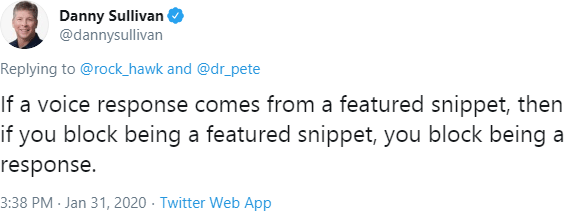
There are several digital marketers asking online if de-optimizing content would help. By ‘de-optimizing’, what they really mean is intentionally making web page content bad in order to not get included as a featured snippet.
That won’t help.
Ford said it perfectly: “There's no point in driving yourself mad trying to stop yourself going mad. You might just as well give in and save your sanity for later.”

Does That Mean All is Lost?
No, of course not. But it does mean that you need to start thinking strategically in structuring your content.
Start with this question: Are your customers’ search queries answerable by a list of items or a simplistic definition?
If your answer is no, then fear not. You’re not losing clicks because visitors will need more details to completely answer their queries.
If your answer is yes, then you’ll need to strategize on how you’re going to drive more value to your featured snippets in order to make your customers want to read further.
The key here is presentation: Providing complete answers to your customers while also enticing them to click on your web pages’ links.
Either way, this recent change to how Featured Snippets function is here to stay, and we’ll have more results to observe as time passes.
However, it does beg the same question we touched upon earlier: What is Google trying to accomplish?
This question applies to all the algorithm updates that rolled out recently and the ones that came before, so we deemed it best to give you the real deal on how Google, as a corporation, thinks.
And we can do that by looking at their Mission and Vision as a Company.
Google’s Mission and Vision

2019 was the year when Google finally became ready to directly act on their Company’s Corporate Mission and Vision.
Google’s Vision:
“To provide access to the world’s information in one click.”
Google’s Mission:
“To organize the world’s information and make it universally accessible and useful.”
Google envisions that its users have ease of access to any info they’re looking for no matter:
What platform they are using: Whether a desktop or a laptop PC, or through mobile devices like smartphones and tablets.
What nature or form their queries would take: Whether voice search, reverse image search, or regular search queries using keywords.
What kind of information they are looking for: Whether walkthroughs or guides, products or services, comprehensive data about anything they are curious about, or anything under the sun.
And more importantly, how much their users are aware of what they are looking for.
The last bullet point is very important to digital marketers and online entrepreneurs.
It’s critical for us to know at which stage of the buying process our potential customers are currently in (or which part of the marketing funnel they’re in.)
I say critical because providing the right content at the right stages may mean retention or conversion of customers to whatever products or services we’re offering.
Let’s go back to Google’s Mission and Vision Statements and define what this means for us who rely on their search engine.
What Google’s Mission and Vision Means for Customers

We’re all consumers of Google.
Whether we’re using Google for our digital marketing process, our online business’ traffic source, or as a customer looking for the next smartphone we’re going to buy.
Google’s search engine will do its best to provide customers with the most relevant information ranked by levels of expertise, authority, and trust signals based on the queries being used.
In the event that it can’t, it will observe which results we clicked and which web pages we spent time on as indicators of relevance. The algorithm will then use that information to catalog relevance for the next users who will be searching for the same thing.
Google’s algorithm will continuously learn and relearn how it defines relevance based on the searches done by its users. And it’s taking into account the overall user experience our websites are giving to searchers.

What Google’s Mission and Vision means for Digital Marketers and Online Entrepreneurs
It’s simple: We can now do marketing “the right way.”
Let’s Do a Quick Throwback:
Before the internet age when businesses were still utilizing traditional “push” marketing methods such as print ads, flyers, and mass media, it was all written for people.
When the internet exploded in popularity, we got stuck with two audiences:

The search engine’s algorithm (to increase our websites’ traffic).

Our customers (who buy our products and services).
SEO was born because of the need to optimize web pages for search engines.
We need our pages and content to be appealing to search engine algorithms. For higher rankings, naturally. Here’s the dilemma: search engine language and human language aren’t very similar. Creating content that talks to both machines AND humans was the name of the game. For a long time.
Here’s another problem. Any new page we publish online needs to get scanned by search engine crawlers before it’ll be included in the search listings and get found by anyone else.
What happened was we ended up making the internet look like this:
We sell custom cigar humidors. Our custom cigar humidors are handmade. If you’re thinking of buying a custom cigar humidor, please contact our custom cigar humidor specialists at
custom.cigar.humidors@example.com.
We needed a solution.
It didn’t come fast, but it’s here now. A bridge between machine language and human language.
The irony is, Google solved this problem through machine learning.
Now we can stop appeasing the algorithm and start focusing our efforts on what really matters. Reaching our customers with language that’s well written, not “search engine food” nonsense.
We can also focus on converting website visitors into customers through a better user experience.
The message that Google is trying to send to us with all the recent algorithm updates is simple:
Make Your Customers Your Top Priority. Not SEO.
Focus on your customers and how you’ll be presenting the value of your products or services to your website visitors in order to convert them.
Please them with what you provide so they become loyal to your brand. And empower them with social media so your loyal customers become your brand’s biggest advocates. The best advertising often comes from our most satisfied customers.
Don’t get me wrong! SEO is still important. Optimizing your websites’ pages still needs to be done. But this time, instead of strategizing around what Google’s algorithm wants, think instead of how you can communicate your brand’s message to your customers.
Let’s talk about just how we can do that.
How to Rank with SEO in 2020

Stay Away from Blackhat SEO

Let me just say this: You can’t trick Google’s Algorithm anymore.
Don’t get me wrong, there are still a lot of black hat SEO methods out there for people who are looking into ranking their pages quickly. They still work and some folks will always chase the quick buck.
Be warned though:
Doing black hat SEO in 2020 will at best get your pages ignored by Google’s search engine algorithm. At worst? It will get your site penalized and blacklisted from SERPs.
With Google cracking down on unreliable sources of information online, combined with its machine learning algorithm, crackdowns on blackhat methods will probably become much more common. There isn’t much longevity in black hat and you probably don’t want your website to be left holding the short end of the stick..
Now that’s out of the way, let’s look at how you should optimize your website to rank for the long term.
On-page SEO Best Practices: An Overview

There’s a lot to know about technical onpage SEO, more than the scope of this guide. But let me use the next few paragraphs to give you a surface level understanding of what it is and how to approach it.
In order to explain SEO to my uninitiated clients, I usually begin by telling them that they should always look at their business’ website the same way they look at a brick-and-mortar store.
Who knew that statement would be more relevant after Google’s recent algorithm updates in 2020?
Let’s say you just established a local business. Before you begin telling your potential customers about your business, or invite them to your store, you would need to make sure that your location is ready..
On-page optimization is done with the same mindset: Preparing your website so it can receive your customers properly.
That means a number of different things:
Making sure your website’s headline and description clearly represents what your business is all about.
Reaching the right customers that would have a need for the products you sell or the services you provide. This is done by making your website’s content relevant to your target audience and targeting the keywords they use to search.
Making sure that everything your visitors see on your website: the copy, images, videos, or buttons; are strategically placed with one goal in mind: converting you visitors into customers. Creating a user experience centered around conversion will help.
Minimizing traffic loss due to poor customer experience or checkout friction. Did your visitors get bored? Did they have trouble finding what they were looking for or checking out?
Setting these guidelines as goals will make sure that your website is more than just an online brochure… but a very profitable tool for your business.
Always keep in mind that your business, and website your website in extension, exists for your customers. Prioritizing your customers will make SEO fall into place naturally.
Now that we have your objectives defined, we can begin on-page optimization.
Our first step: Know what we’re dealing with.
And we do that with a website SEO audit.
The SEO Auditing Process

To deal with any problem, we first need to identify what it is. For SEO, that means doing an audit of your website so we can clearly know what gaps or issues we’re dealing with.
Doing an SEO audit will also show you critical errors that you need to address immediately. This is important because your website may have issues that are lowering your chances of getting ranked well with search engines.
That said, here are the four important insights you need to think about when doing an audit for any site:
Internal Analysis:
Covers the different aspects that affect the ranking factors of your website which you could address with on-page optimization efforts. This would give you insights on:
General Content Issues
Individual Page Issues
Internal linking
Competitor Analysis and Keyword Insights:
How are your competitors doing with their SEO? And what are they doing to achieve their current rankings? You can use this kind of information as a comparison for your website’s performance.
External Backlink Analysis:
A personal favorite. Backlink analysis will tell you what kind of links you’re getting and from where. What kind of links you have so far compared with who links to your competitor can usually give you a pretty good game plan on what links to get next.
Technical Analysis:
Covers very important factors that affect the experience of your website’s visitors. This will show you insights on:
Your website’s speed
How accessible it is
How viable your web pages are for indexing
If you’re new to SEO, doing an SEO site audit manually can seem like a daunting process. The good news is, there’s tools online that can help you with just a few clicks.
Let’s look at a few.

Our Top 3 Recommended Tools for doing SEO Audit

Our first recommendation is the ultra-powerful SEMRush Site Audit tool. It comes with the following features:
Allows you to check and monitor your website’s overall SEO health
Gives you a ranked list of SEO Issues so you’ll know which ones to prioritize first
Track the progress of your SEO Optimization efforts
Identify and resolve hreflang errors
Make sure your site is secure by having your HTTPS protocols checked
Identify all possible AMP implementation issues
Check your site's health with our SEO analysis tool
Conducting an SEO-evaluation might seem a time-consuming job. But if you use the right tools, finding and fixing on-site errors can be carried out in an effective and fast way. with the SEMrush Site Audit tool, you can perform a comprehensive technical SEO audit at high speed!
Analyzing your website with the SEMrush SEO audit tool's reports helps you make it more accessible for search engine robots. It also helps you ensure a positive User Experience. To conduct an SEO-test with SEMrush Site Audit reports, set up an audit campaign, and you will be able to:
- ✓ Optimize your internal and external links;
- ✓ Add tags where they are missing;
- ✓ Make titles, meta descriptions, and other HTML tags unique and comprehensible for users and search engines;
- ✓ Correct broken images and provide them all with an alt attribute;
- ✓ Detect and erase error pages;
- ✓ Find duplicate content page;
- ✓ And fix other problems blocking your SEO progress!
You can crawl your website at any time to get reports with the most fresh results. Just make sure not to exceed your crawled pages limit!

Niel is one of those SEO Gurus who equips digital marketers with the tools that we need for our trade. His SEO Analysis tool is one of these tools.
What makes it special is how beginner friendly it is as it’s very easy to use. All you need is input your website’s URL and you’re good to go.
One nice perk is the analysis tool also gives step by step instructions on how you can fix each issue that it finds for you. These instructions are in the form of easily-digestible video tutorials, making them a good choice for beginners in the field of SEO.
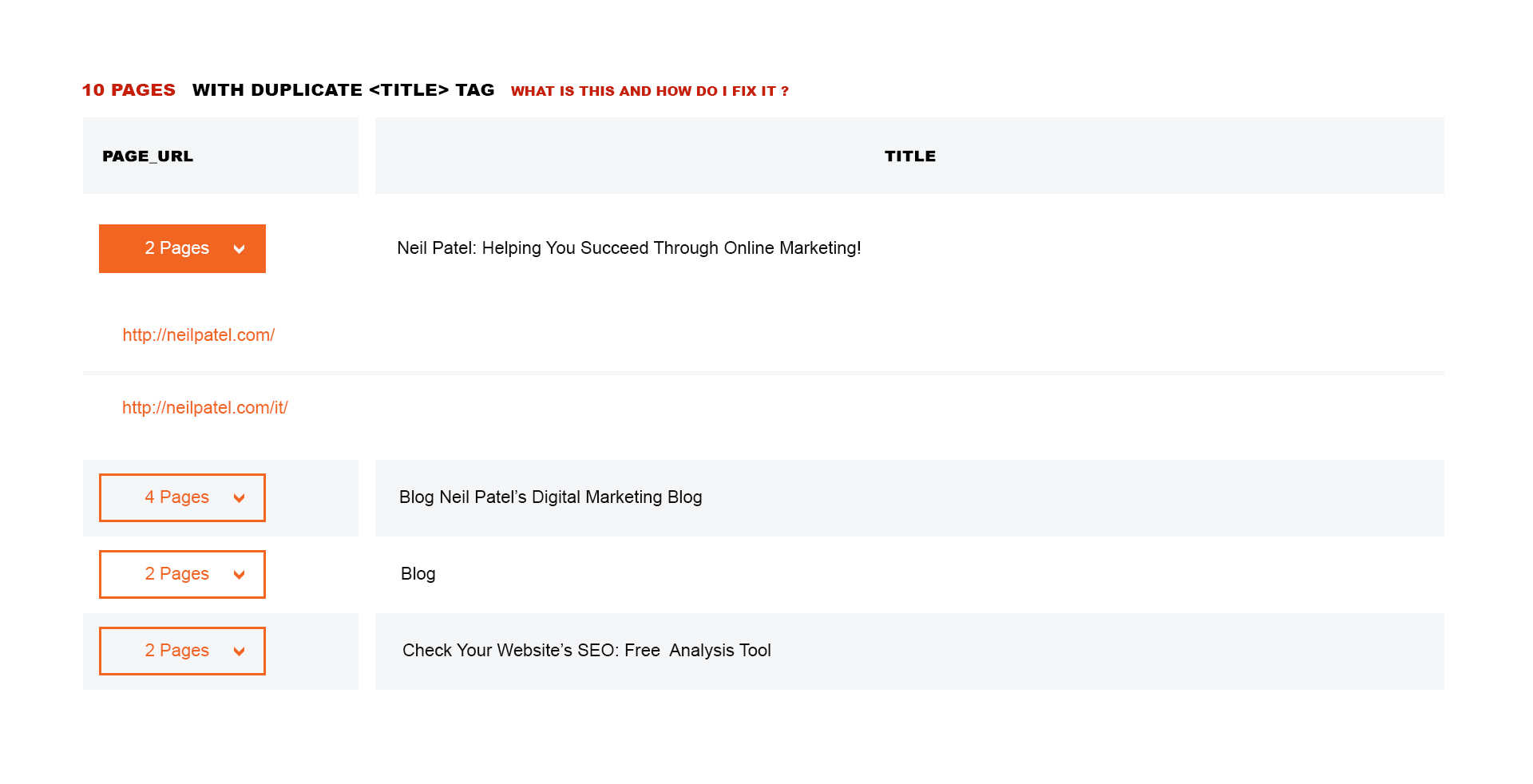

Woorank is also an amazing SEO auditing tool that you could use to analyze your website.
It provides specific and actionable insights on your site’s on-page and off-page SEO, identifies broken links your pages may have, gives you information on the quality of your backlinks, as well as find defective web pages.
Woorank will then give you recommendations on how to improve your website’s impressions and average position in SERP.
This tool also allows you to download your audit reports in PDF format.
You’ll also find these reports very comprehensive and easy to use, and will definitely help you in fixing your website’s issues.
Alright, we’ve identified the gaps that we need to address to optimize your website. We now know in which aspects you’re lacking, and in which ones you are doing great in terms of SEO.
Our next step: Address how to get your web pages in front of your customers by finding out how they search in Google.
Keyword Research in 2020

Most self-help articles online would introduce keyword research to you in technical terms and provide you with the numerous benefits you’ll gain when you undertake this process.
That’s all and good, but why do we need to do keyword research? What makes it effective in the first place?
And more importantly, how does it help my website gain customers?
The answer to that question is incredibly simple: The products that you sell and the services you provide are the answers that your customers are seeking.
All that’s left is for us to figure out:
What their questions are and,
How do they ask their questions
That right there is the real purpose of keyword research.
It sounds simple, yes. But most of the time you’ll find it harder to figure out what the questions are rather than finding the answers for them.
That’s because different people also have different and oftentimes distinct ways of asking their questions.
It’s up to us to identify what makes their questions and the way they ask them different.
Here’s how we do that.
Creating Personas for your Customers
Customer Personas are semi-fictional characters that represent the distinct difference of your website’s visitors.
I used the term semi-fictional because even though we’ll be conceptualizing their characteristics and defining their traits, your actual customers are still real human beings.
This means that while we can categorize them based on their buying habits for example, there’s a fair chance that our perception of them would not be 100% accurate.
Because each human being is unique, just like everyone else.
Now in order to begin creating our customers’ personas, we first need to define the following demographics:

Age

Gender

Geographical Location

Education Level

Marital Status

Household Income

Occupation

Hobbies and Interests
Depending on the nature of the products or services you provide, you may only require information on some of them, or you may need to know all of them.
Our next step is to organize them into groups based on the biggest demographic they belong under. Three to five groups should be enough to cover the majority of your customers while remaining small enough to also be specific.
There are tons of templates available online and they include anywhere from general data to vital information that would provide you deeper insights on your customers and how they think.
Here’s a sample of a customer persona template:
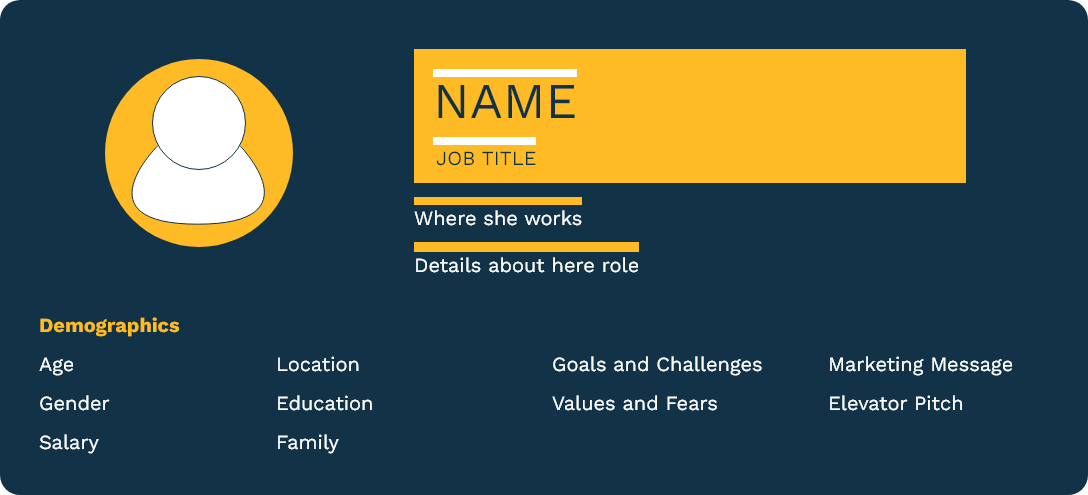
Now you know what to look for, it’s time to fill in the details so your Customers Personas can start taking shape.
There are numerous different sources of information about your customers, from small details we tend to overlook when we check out our site’s statistics to organic engagements from real-life consumers in our social media pages.
When looking for information related to your customers’ personas, it's better to cast a wide net.
Here are three of the best places where you could find these valuable insights:
Your Website’s Analytics
Let’s use Google Analytics for this example since most of you probably use the same web analytics service.On the left-hand sidebar, you’ll find the Audience tab. This will give you relevant information about your target audience like age, gender, interests, and geographical location.
You can also check if they used their mobile phones or their computers to visit your site, among other minute details that will provide more insights about your audience.
More importantly, the data you gather here is essential to creating actionable customer personas as they reveal the actual intent that led your audience to your website as well as how they got there.
Social Media Research
I mentioned this offhand earlier, but Social Media channels can be very potent sources of organic real-life data about your customers.
Look for customers asking questions on your social networking pages like Facebook, Twitter, or those commenting on your videos on Youtube.
Take it one step further and check out your competitors’ social media channels as well.
These are very valuable insights which will determine how accurate your customers are represented in the profiles you are creating.
Ask Your Audience
Your customers know themselves better than anyone. So why not gain the information directly from your customers by asking them directly?
Surveys can reveal deep insights into your customers since you can ask the questions that really matter to you and your business. This can also be an opportunity for you to identify pain points that resonate the most with them.
However, you would need to make your survey worth their time. And this is where you’ll be needing your creative juices.
You can either make it fun for them by integrating it into a quiz or you can incentivize the process by giving them a freebie in return for answering your survey.
The freebies don’t even need to be expensive. A free downloadable pdf or a free short course that you can afford to provide to them in exchange for spending their time would go a long way.
It could also be a good opportunity to build your brand’s relationship with your customers. Now that’s a huge plus for your business!
Here’s what your Customer Personas would probably look like once you’re done:
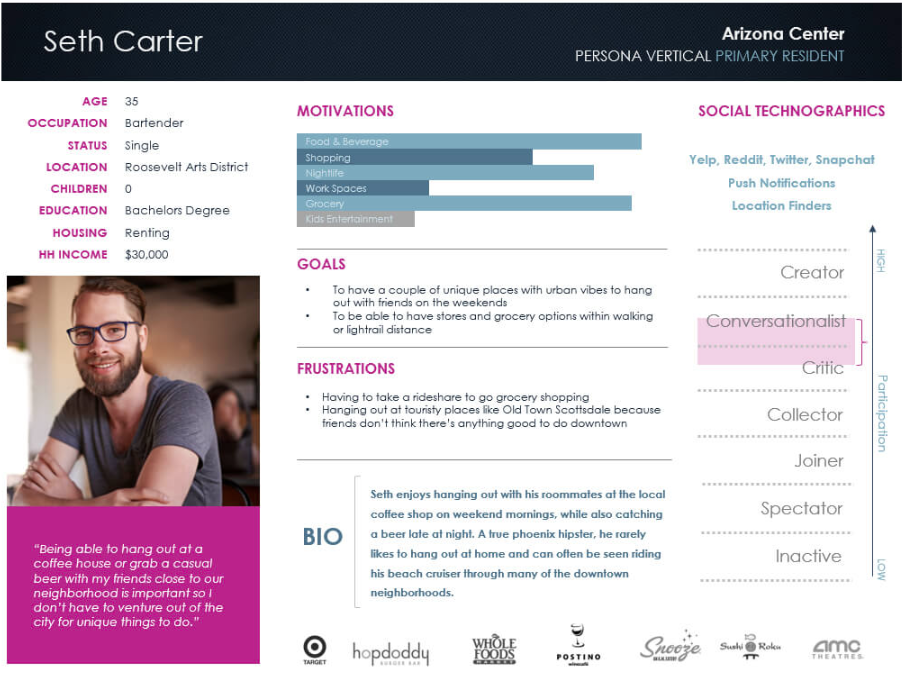
Image Source: Zion and Zion https://www.zionandzion.com/consumer-experience-stereotypes-personas-and-demographics/
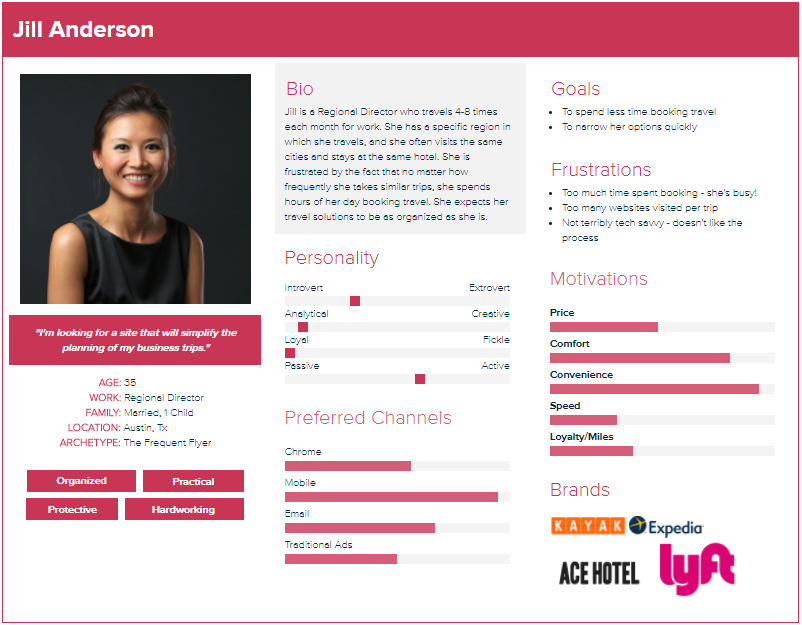
Image Source: Neil Patel https://neilpatel.com/wp-content/uploads/2017/09/pasted-image-0-1391.png
Alright, you now have a clear idea on who your customers are and what’s important to them.
Now we put that knowledge to good use.
Finding Topics that Matters to your Customers
Thanks to the recent updates in Google’s algorithm, you can now focus on doing this more than considering your target keywords for SEO.
Since the focus is now on addressing your customers’ queries directly and accurately, the detailed insights you have gained from your customer personas will help you narrow down on your content creation strategies.
You can also pick different topics that are specific to the needs and pain points of each of your customer personas.
Placing this at the top of your priority will make sure that you’re not just meeting the needs of your customers by targeting their search intent, you’ll also be appeasing Google’s algorithm which would result in higher rankings for your focus pages.
It would also make it easier for you to find your keywords using research tools available online since you already have a starting point.
There is one problem though:
Your competitors in the same industry are all focusing on the same keywords, looking at the same customer personas, and using the same keyword research tools.
Now there’s only one solution for that:
You need to evolve your research and determine which keywords aren’t being targeted by your competitors.
Finding Untapped Keywords
It goes without saying that the success of your optimization efforts relies mostly on the keywords you are targeting.
With most of us using the same tools, it is to be expected that we’ll be getting the same results as other businesses in the same industry targeting the same audience.
No matter how powerful the keyword research tool we are using is, logic dictates that we’re all looking at the same thing.
Even our keyword research tools recognize this fact and show it to us as keyword difficulty ratings.
This is the very reason why you shouldn’t take keyword research for granted. It’s not enough to get the best results in terms of monthly search volume. You need to take it to the next level and thoroughly analyze your customers’ search intent and how they translate it into queries.
Do this, and you’ll find yourself looking at hidden keyword gems that haven’t been discovered by your competition.
Here are several ways for you to find these keywords:
Use your Customer Personas to get inside your target audiences’ heads.
Then gather your team and have brainstorming sessions with them. This would give you fresh insights and make sure you don’t miss any essential details that would help you in determining your focus keywords.
Take out your Survey Results and view your customers’ raw answers.
Most of the time, we only look at the analyzed summary of the surveys we conduct. For the purpose of finding untapped keywords, look at the actual responses from your customers and examine how they structured their answers closely.
Cast your nets wide on User Generated Content sites and communities.
Also known as UGC sites, these online hubs are a very abundant source of untapped keywords for your industry. What makes it a very potent source for your keyword research is the fact that these are the places online that people go to when they can’t find the exact answer to their questions.
Here are several examples of UGC sites:
Quora
Wikipedia
Entity Explorer
Google Related Keywords
Google Suggest
Scanning Social Networking Sites.
Specifically pages and communities in your industry, niche, and sphere of influence. Focus your attention on comments and reactions. Both of these actions in social media are highly indicative of engagement levels because they are organic reactions from your customers.
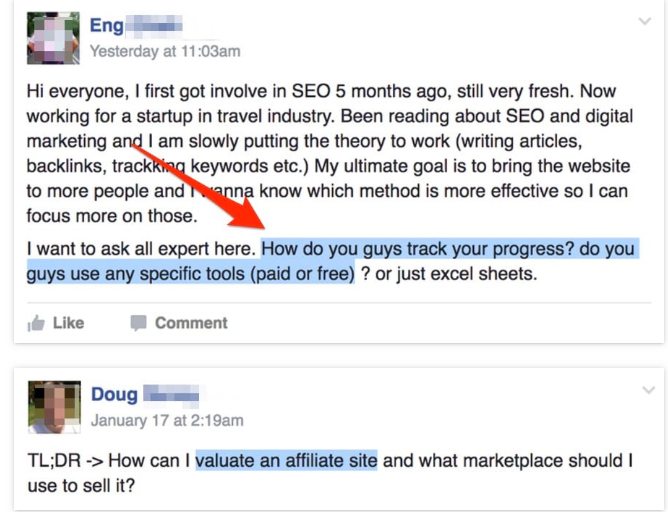
Plus, when people post on social media, they rarely edit their answers. This means you’re getting insights on the way your customers ‘talk’ in real life.
It is also one of the places where people go to ask questions when they can’t find their answers online.
Checkpoint Time!
At this point of your keyword research, you would already have the following:
Clear insights on your customers’ identities, their needs, and their pain points categorized by the different personas they represent
A clear idea of the topics that matter to them and an overhead content strategy
Focus keywords that reflect your customers search intent and at the same time, flies under your competitors’ radar.
Our next steps would now revolve around analyzing the keywords you have chosen to focus on to determine if they are worth banking your whole content strategy on.
Let’s start with your keyword’s search volume.
Analyzing Monthly Search Volume
In a nutshell, we use search volume to determine how many times a keyword appears in searches on a monthly average.
However, it’s when you combine them with other metrics that it starts providing you insights that’s valuable to your keyword research.
Here are several keyword conditions you need to look out for that relates to its search volume:
High Volume, High Competition.
These are keywords that need a lot of effort before you could rank. But you already know that, so why bother mentioning it?
Well that’s because a lot of digital marketers take the meaning of the word ‘effort’ in SEO for granted. Oftentimes, this leads to your website missing out on opportunities that you didn’t grab since it’s ‘too difficult’.
Let’s go straight to the point here: If you’re trying to rank for a keyword with high search volume, analyze your competition’s SEO first.
Ask these questions: What do your competitors have in their arsenal? Do you have something better? Can you go toe to toe with them?
Considering these factors first before you give up may allow you to rank for high volume keywords.
Low Volume, Low Competition.
There are two possibilities at play here: You’re either dealing with snowflake keywords (keywords that appear in searches very rarely) or you’re looking at a long tail keyword.
Comparing the two would show you a distinct difference: Long Tail Keywords are brimming with search intent.
And you know what that means right? High search intent equals high conversion rates.
Now like we discussed in our complete guide to long tail keywords: Make sure your website, its pages, and the contents contained within are all optimized for conversions.
Otherwise, you’ll be wasting the high rates of conversions that long tail keywords will bring to your website.
High Volume, Low Competition.
These keywords can either be considered as new trends or seasonal trends, and they are very potent sources of web traffic for your website.
Not only will you gain increased page views and sessions on your site, you’ll find that ranking for these keywords are a pretty easy task as well.
However, there’s a catch: these keywords are on a first come, first serve basis.
You’ll need to see these keywords and conceptualize on their topics from miles away. This means you not only need to be updated on current events, you also need to be able to predict how it will affect future trends.
Take a look at Neil Patel, Backlinko, or MOZ as examples. These online entities are all racing to get in front of updates for SEO methodologies and changes in search engine algorithms.
The amount of insights needed to get a hold of these keywords pays off eventually, as having content that talks about the topics they bring will see your web pages jumping to the top of the SERP ranks.
Okay, so by now you should have a good number of keyword ‘buckets’ that you’re eyeing. Let’s run them through a filter on how effective they will be for your website.
Analyzing Your Keywords’ Commercial Intent
One of the most common mistakes that digital marketers make when doing keyword research is ignoring keyword commercial intent.
By looking at your keywords’ commercial intent, you are evaluating the chances of gaining customers or leads from users searching for your keywords.
Sounds familiar, right? That’s because the main focus of commercial intent is conversions.
Keywords with high commercial intent are like irresistible invitations to your prospective customers. Customers who are begging you to tempt them with the products or services that you are offering.
These customers are virtually shouting at you at the top of their voice that they have the money to afford what you have, and that they want it right now.
This process of identifying how the intent of your keyword affects your content strategy is also referred to as Intent Marketing.
There are four commercial intent categories that ALL keywords in the known world fall under:

The Buy Now Category , which includes keywords that customers use in their search queries moments before they actually make a purchase. You can be sure that the customers who use these keywords have their credit card in their hands.
Some words that tend to be part of Buy Now Keywords:
- Buy
- Coupon
- Discount
- Deal
- Shipping
While the keywords that fall under this category do not have significantly high search volume, they make up for it through their insanely high conversion rates.

Product Information Keywords , on the other hand are queries that focus on a specific category, brand, or service type. Customers using the keywords that fall under this category are usually at the early stage of their buying process compared to those who are using Buy Now Keywords.
The queries for product information keywords usually have the following words or phrases:
- Best
- Top 10
- Reviews
- Cheap
- Affordable
- Brand Name
- Model Name
- Product Type
The words ‘cheap’ and ‘affordable’ here may have negative connotations for you. However, taking a closer look at it would show that customers using them in their search queries are actually ready to buy. They’re just looking for a better alternative in terms of pricing.

The General Information Keywords category is where the majority of the queries online fall under.
And while It is fair to say that these keywords don’t convert really well, ignoring them would still be a mistake since they make up a huge part of the queries that customers enter on Google.
General Information Keywords tend to include words and phrases like:
- How to
- Tips
- Strategies
- Best way to
- Ways to
- I need to
The best way to capitalize on this category is to first look for keywords that have high volume but low competition rates.
Next, create content focusing around these keywords that drive huge value to the topics you are discussing.
Finally, and probably the most important step: Have your readers opt-in to your mailing list so you can be a part of their buying phases.
Bonus:
A good incentive you could provide in exchange for their email address would be free content that would further help them with the topics you just discussed on their content.
Our fourth and final category: Tire Kicker Keywords. These are keywords that have very high search volumes, but are also very unlikely to cause you conversions. Not now, and probably not ever.
Here are several words and phrases that indicate tire kicker keywords:
- Free
- Torrent
- Download
- …for free
So unless you’re actually aiming to deliver free content that would be an opening for an OVO (Opt in, Value, Offer) process, then steer clear from these keywords.
Alright, you’re making good progress.
You now have your focus keywords so that takes care of the ‘what my customers are looking for’. You’re now familiar with your keywords’ commercial intent, so that takes care of the ‘how your customers ask their questions.’
This means you’re now at the final step of your keyword research.
Checking Your Keywords’ Growth Rates
In the SEO Space, you will find that some of your focus keywords’ relevance relies on another important factor: Time
Specifically, seasonal popularity.
Don’t get me wrong, evergreen keywords exist. But not all keywords your aiming to rank for is relevant all year long, or forever for that matter.
This is where your keywords’ growth rates come into play.
And Google provided a free tool to help us out: Google Trends
Here are several ways for you to capitalize on your keywords’ differing growth rates using Google Trends:
Find relevant topics that are popular right now and create contents for them
Identify keywords that are falling in trend and steer clear of them
Use the data from Google Trends to plan your content calendar
Check geographical data to make your more targeted contents
Get in front of seasonal trends and publish your contents at the right time
Use related queries to uncover more untapped keywords related to the ones you are focusing on
Now, Google Trends isn’t the only useful keyword research tool you can have in your arsenal.
Here are four more tools that you can use in finding those valuable focus keywords for your your website:
The Top 3 Free Keyword Research Tools
Aside from doing your website’s audit, SEMRush also boasts an ultra-powerful keyword research tool. With it, you can:
KWfinder boasts highly accurate search volumes and SEO difficulty ratings for you to gain clear insights on the keywords you are trying to rank for. It’s features also include:
What’s better than knowing what your competition is up to? Reverse engineering their strategies, that’s what. Well, Neil Patel’s Ubersuggest promises to give you that capability. Among other things:
And with that said, we’re done with your keyword research. Now we begin optimizing your website.
Starting with your pages’ metadata.

